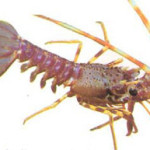
Octopus vulgaris
Octopuses belong to the class of marine molluscs known as the Cephalopoda, with both the octopus and the squid having evolved into intelligent mobile forms of the class, with a range of complex behaviours. They are the most advanced of all the marine invertebrates, with both long and short-term memory functions and the ability to ‘learn’. Although cephalopods are molluscs, most species have evolved to the point where only a diminished internal shell exists, as for example the cuttlebone of the cuttlefish, or as in the case of the octopus, the shell has been completely lost.
The common octopus (Octopus vulgaris) is found world wide in tropical to temperate waters, from near-shor shallows to as deep as 200m. Most scientists believe that the Octopus vulgaris species actually contains a number of related sister species and that a review of the taxonomy is overdue. Despite these issues of identity, the common octopus is commercially important and accounts for a large percentage of octopus fisheries. They are commonly collected in octopus pots, which were traditionally made of clay but today are typically made of plastic. Unlike crab or lobster traps, octopus pots are not baited; rather, they provide a seemingly safe haven for the octopus.
The life span of the common octopus is 12 to 18 months. It may lay between 200,000 to 400,000 rice-grain sized eggs. After hatching, the young will they spend 45 to 60 days among plankton. During this time, the majority of them become a meal for other marine organisms; those that survive settle out and begin a benthic (bottom dwelling) existence. They have a hard beak to tackle prey with hard shells like crabs, shrimps and other molluscs.
The octopus is a master of camouflage, has the remarkable ability to change colour, and as a result can be difficult to spot. However, they discard piles of shells and carapaces outside their lairs, and these discards, called middens, help divers identify a likely octopus location. Octopus vulgaris lairs are typically holes in rocks or excavated under or between rocks. The eight arms of the octopus (squids have ten) are equipped with sensitive suckers and are used to capture prey. The octopus grow to up to 60cm.








Social Profiles